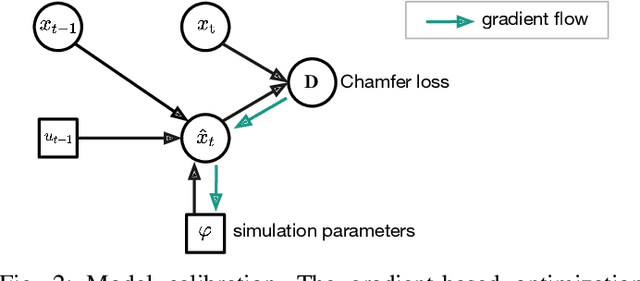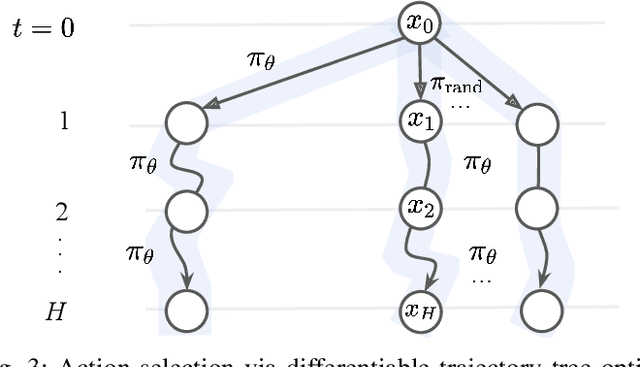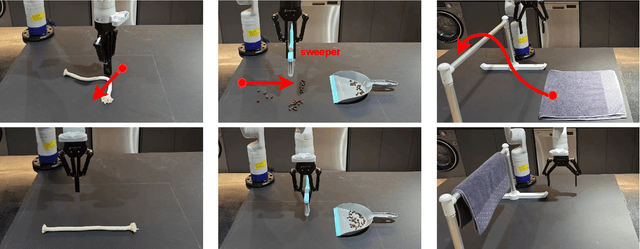Differentiable Particles for General-Purpose Deformable Object Manipulation
Paper and Code
May 02, 2024



Deformable object manipulation is a long-standing challenge in robotics. While existing approaches often focus narrowly on a specific type of object, we seek a general-purpose algorithm, capable of manipulating many different types of objects: beans, rope, cloth, liquid, . . . . One key difficulty is a suitable representation, rich enough to capture object shape, dynamics for manipulation and yet simple enough to be acquired effectively from sensor data. Specifically, we propose Differentiable Particles (DiPac), a new algorithm for deformable object manipulation. DiPac represents a deformable object as a set of particles and uses a differentiable particle dynamics simulator to reason about robot manipulation. To find the best manipulation action, DiPac combines learning, planning, and trajectory optimization through differentiable trajectory tree optimization. Differentiable dynamics provides significant benefits and enable DiPac to (i) estimate the dynamics parameters efficiently, thereby narrowing the sim-to-real gap, and (ii) choose the best action by backpropagating the gradient along sampled trajectories. Both simulation and real-robot experiments show promising results. DiPac handles a variety of object types. By combining planning and learning, DiPac outperforms both pure model-based planning methods and pure data-driven learning methods. In addition, DiPac is robust and adapts to changes in dynamics, thereby enabling the transfer of an expert policy from one object to another with different physical properties, e.g., from a rigid rod to a deformable rope.
 Add to Chrome
Add to Chrome Add to Firefox
Add to Firefox Add to Edge
Add to Edge